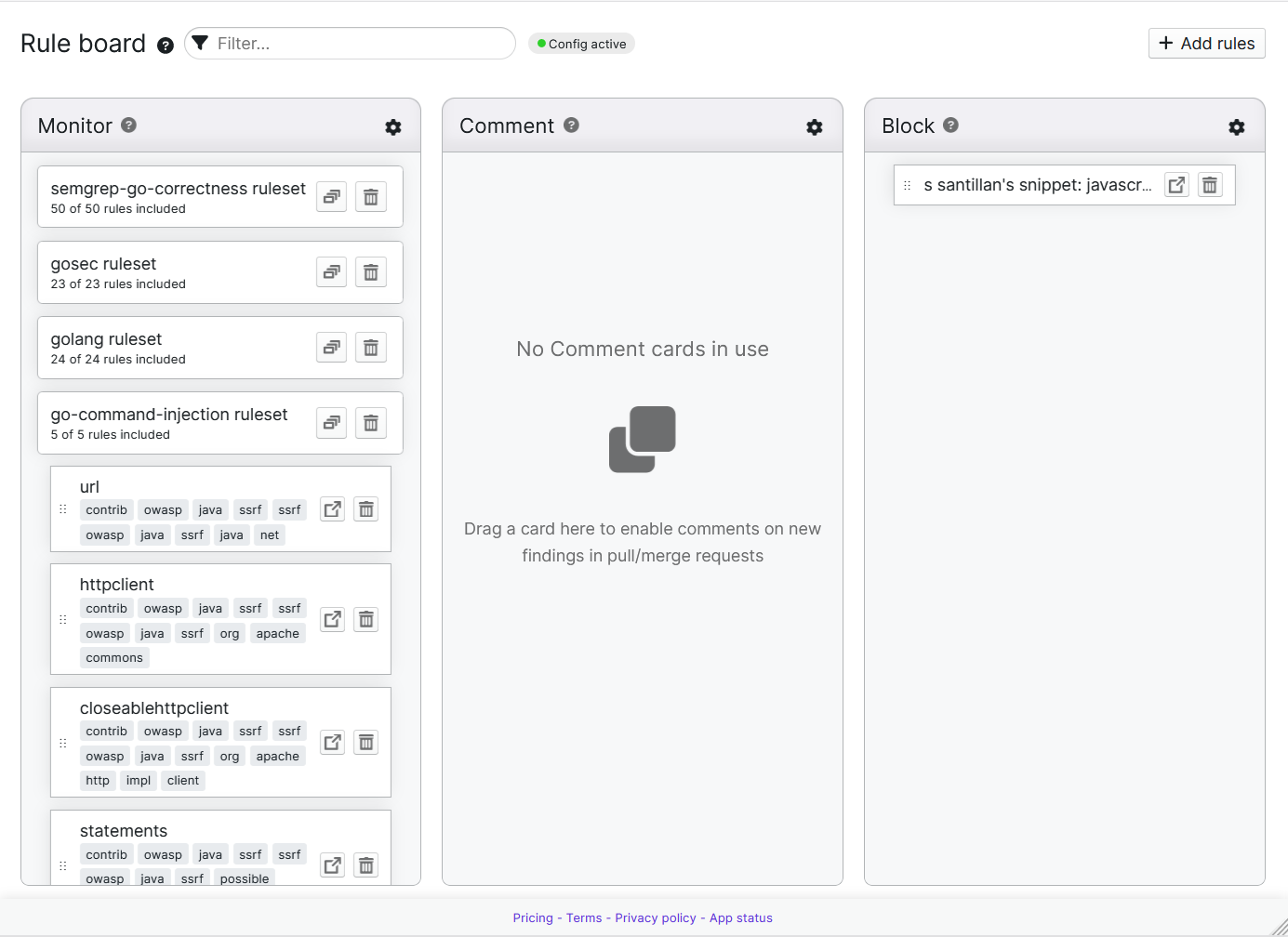April 2022
· 4 min read
The following updates were made to Semgrep in April 2022.
These release notes now include edited important and breaking changes. To see the complete change notes, visit the Semgrep changelog.
Semgrep App
Additions
- You can now search for a rule within your Rule Board.
- A
Commentcolumn within the Rule Board enables Semgrep App to create suggestions and messages within Pull Requests (PRs) or Merge Requests (MR) based on the rule'sautofixandmessagevalues.
Changes
- Unlisted rule visibility has been renamed to Public within the Editor.
- The
Auditcolumn within the Rule Board has been renamed toMonitor. Findings generated by rules within this column are displayed only on Semgrep App.
Semgrep CLI and Semgrep in CI
These release notes encompass upgrades for all versions ranging between 0.87.0 and 0.90.0.
Changes
- For GitHub Enterprise users: Semgrep CI uses
GITHUB_SERVER_URLto generate URLs if it is available. - When running a baseline scan on a shallow-cloned Git repository, Semgrep still needs enough Git history available to reach the branch-off point between the baseline and current branch. Previously, Semgrep tried to gradually fetch more and more commits up to a thousand commits of history, and then fetch all commits from the remote Git server. Now, Semgrep keeps trying smaller batches until up to a million commits. This change reduces runtimes on large baseline scans on very large repositories.
- You can now set
NO_COLOR=1to force-disable colored output.
Breaking changes
- taint-mode: Unification of metavariables between sources and sinks is no longer enforced by default. It was not clear that this is the most natural behavior as it was confusing even for experienced Semgrep users. Instead, each set of metavariables is now considered independent by Semgrep. The metavariables available to the rule message are all metavariables bound by
pattern-sinks, and the subset of metavariables bound bypattern-sourcesthat do not collide with the ones bound bypattern-sinks. We do not expect this change to break many taint rules because source-sink metavariable unification had a bug (see #4464) that prevented metavariables bound by apattern-insideto be unified, thus limiting the usefulness of the feature. Nonetheless, it is still possible to enforce metavariable unification by settingtaint_unify_mvars: truein the rule options. For more information, see section Metavariables, rule message, and unification. - The
semgrep/semgrepDocker image no longer setssemgrepas the entry point. This means that Semgrep is no longer prepended automatically to any command you run in the image. This makes it possible to use the image in CI executors that run provisioning commands within the image. Affected users may receive a deprecation notice. Adjust scripts accordingly.
Additions
- A new
focus-metavariableoperator that enables you to focus (or zoom in) the match on the code region delimited by a metavariable. This operator is useful for narrowing down the code matched by a rule, to focus on what matters. For more information, see focus-metavariable documentation. (#4453) - Join mode now supports inline rules through the
ruleskey underneath thejoinkey. For more information, see Inline rule example.
Language support improvements:
- Scala support is now officially fully GA.
- Ellipsis method chaining supported.
- Type
metavariablesare now supported.
- Ruby support improvement:
- Add basic support for lambdas in patterns. You can now write patterns of the form
-> (P) {Q}wherePandQare sub-patterns. (#4950)
- Add basic support for lambdas in patterns. You can now write patterns of the form